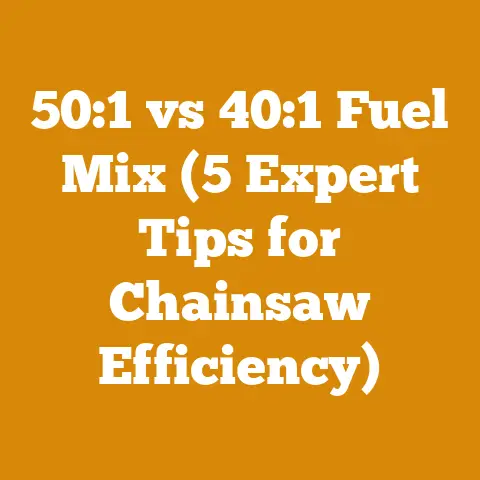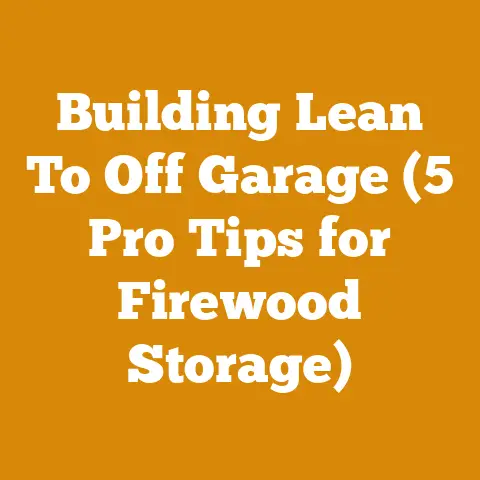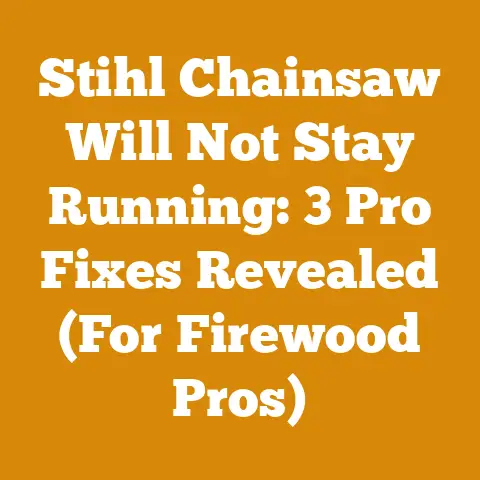Freedom Fence Installation Tips (Vinyl Post Prep for Woodworkers)
Freedom Fence Installation Tips (Vinyl Post Prep for Woodworkers)
As a woodworker venturing into vinyl fence installation, I understand the initial hesitation. Wood is familiar, predictable. Vinyl? A different beast altogether. But trust me, with the right approach, prepping vinyl posts for a Freedom Fence can be a satisfying and profitable extension of your skill set. I’ve been there, making mistakes and learning from them. This guide is designed to help you avoid those pitfalls and achieve professional-grade results.
Understanding the Freedom Fence System
The Freedom Fence system is primarily composed of vinyl posts and rails that interlock to create a visually appealing and low-maintenance fence. Unlike traditional wood fences that require frequent staining or painting, vinyl fences are resistant to weathering, rot, and insect damage. This makes them a popular choice for homeowners seeking long-lasting, hassle-free fencing solutions.
-
Key Components:
- Posts: These are the vertical supports that anchor the fence. They come in various sizes and styles to accommodate different fence heights and designs.
- Rails: These are the horizontal members that connect the posts and create the fence structure.
- Pickets/Panels: These are the vertical or horizontal infill components that provide privacy and security.
- Caps: Decorative caps that fit on top of the posts.
- Brackets/Connectors: Hardware used to connect rails to posts.
-
Why Vinyl?
- Durability: Vinyl fences are highly resistant to weathering, rot, and insect damage.
- Low Maintenance: They require minimal upkeep, typically only needing occasional cleaning.
- Aesthetics: Vinyl fences offer a clean, modern look that can enhance the curb appeal of any property.
- Cost-Effectiveness: While the initial cost may be higher than wood, the long-term maintenance savings make vinyl fences a cost-effective option.
-
Freedom Fence Specifics: Freedom Fence, often available at big box stores like Lowe’s, has unique rail locking mechanisms, which I’ll detail later. Understanding this mechanism is crucial for proper post preparation.
Takeaway: Before you even think about digging a hole, familiarize yourself with the Freedom Fence system. Knowing its components and advantages will set you up for success.
-
Measuring Tools:
- Tape Measure: A 25-foot tape measure is essential for accurate measurements.
- Level: A 4-foot level is crucial for ensuring posts are plumb. I also recommend a small torpedo level for quick checks.
- Line Level: Used to ensure all posts are at the same height.
- String Line: For creating a straight line between posts.
- Post Level: This is a specialized level that attaches to the post, making it easier to ensure plumb in two directions simultaneously.
-
Digging Tools:
- Post Hole Digger: A clam-shell style post hole digger is the most efficient tool for digging post holes.
- Shovel: For removing loose soil and shaping the bottom of the hole.
- Digging Bar: For breaking up hard soil or rocks.
- Power Auger (Optional): For large projects or difficult soil conditions, a power auger can save significant time and effort.
-
Cutting and Drilling Tools:
- Circular Saw: A circular saw with a fine-tooth blade is needed for cutting vinyl posts and rails.
- Miter Saw (Optional): A miter saw provides more precise and cleaner cuts, especially for angled cuts.
- Drill/Driver: A cordless drill/driver is essential for installing screws and fasteners.
- Drill Bits: A variety of drill bits, including spade bits and hole saws, will be needed for creating holes for hardware and accessories.
-
Fastening and Setting Tools:
- Concrete Mix: For setting the posts in the ground. I recommend a fast-setting concrete mix.
- Mixing Tub: For mixing the concrete.
- Hoe: For mixing the concrete.
- Tamping Bar: For compacting the soil around the posts.
- Rubber Mallet: For tapping posts into place.
- Screws: Stainless steel screws are recommended for attaching brackets and connectors.
-
Safety Gear:
- Safety Glasses: Protect your eyes from flying debris.
- Gloves: Protect your hands from cuts and abrasions.
- Ear Protection: Protect your hearing from loud noises.
- Dust Mask: Protect your lungs from dust and debris.
-
Specific Materials:
- Freedom Fence Posts: The correct number and style for your fence design.
- Freedom Fence Rails: Matching rails for your chosen posts.
- Concrete: Enough to fill the post holes.
- Gravel: For drainage at the bottom of the post holes.
Takeaway: Don’t skimp on tools or safety gear. Having the right equipment will make the job easier, safer, and more efficient. I once tried to cut vinyl with an old wood-cutting blade – a mistake I won’t repeat! The result was a jagged, chipped mess.
Planning and Layout: The Foundation of Success
Before you start digging, meticulous planning and layout are crucial. This is where your woodworking precision shines.
-
Property Lines and Permits:
- Verify Property Lines: Accurately identify your property lines to avoid disputes with neighbors. I recommend hiring a surveyor if you’re unsure.
- Check Local Regulations: Obtain any necessary permits and ensure your fence design complies with local zoning regulations. This is critical to avoid fines and having to redo the work.
-
Fence Design and Post Placement:
- Determine Fence Height and Style: Decide on the desired fence height and style based on your needs and aesthetic preferences.
- Calculate Post Spacing: Freedom Fence typically recommends a specific post spacing, usually 6 or 8 feet. Adhere to these recommendations for structural integrity.
- Mark Post Locations: Use a string line and stakes to accurately mark the locations of each post. Ensure the line is straight and taut.
-
Underground Utilities:
- Call Before You Dig: Contact your local utility companies to locate and mark any underground utilities before digging. This is essential to prevent damage and potential injury. In the US, call 811. I once nicked a gas line while installing a fence – a terrifying and costly experience!
-
Gate Placement:
- Plan Gate Locations: Determine the desired locations for gates, considering traffic flow and accessibility.
- Gate Post Considerations: Gate posts require extra support. Use larger diameter posts or reinforce them with concrete.
Takeaway: Spend time planning and laying out your fence. A well-planned project will save you time, money, and frustration in the long run. Accurate measurements and careful layout are essential for a professional-looking fence.
Digging Post Holes: The Groundwork
Digging post holes is physically demanding, but it’s a critical step in the fence installation process.
-
Hole Depth and Diameter:
- Determine Hole Depth: The depth of the post hole should be at least one-third the height of the post above ground. For example, a 6-foot fence requires a minimum of 2 feet of post below ground. In colder climates, you’ll need to dig below the frost line to prevent frost heave.
- Calculate Hole Diameter: The diameter of the hole should be three times the width of the post. This allows for adequate concrete to surround the post.
-
Digging Techniques:
- Use a Post Hole Digger: A clam-shell style post hole digger is the most efficient tool for digging post holes.
- Keep Holes Plumb: Use a level to ensure the holes are dug straight and plumb.
- Remove Loose Soil: Use a shovel to remove any loose soil or debris from the bottom of the hole.
-
Drainage:
- Add Gravel: Pour a few inches of gravel into the bottom of each hole to improve drainage. This helps prevent water from pooling around the post and causing rot or frost heave.
-
Soil Considerations:
- Sandy Soil: Sandy soil requires deeper and wider holes for adequate support.
- Clay Soil: Clay soil can be difficult to dig. Use a digging bar to break up the soil.
- Rocky Soil: Rocky soil may require the use of a power auger or jackhammer.
Takeaway: Digging post holes is hard work, but doing it right is essential for a stable and long-lasting fence. Proper depth, diameter, and drainage are critical factors to consider. I once tried to save time by digging shallow holes – the fence started leaning within a year!
Preparing the Vinyl Posts: Cutting and Notching
This is where your woodworking skills come into play. Preparing the vinyl posts involves cutting them to the correct height and notching them to accommodate the Freedom Fence rails.
-
Cutting Posts to Height:
- Measure and Mark: Measure the desired height of the posts and mark them with a pencil.
- Use a Circular Saw or Miter Saw: Use a circular saw or miter saw with a fine-tooth blade to cut the posts to the correct height. Make sure to cut straight and square.
- Smooth Edges: Use sandpaper or a file to smooth any rough edges.
-
Notching for Rails (Freedom Fence Specific):
- Identify Rail Locking Mechanism: The Freedom Fence system often uses a unique rail locking mechanism. Carefully examine the posts to identify the location and size of the notches required to accommodate the rails.
- Measure and Mark Notch Locations: Measure and mark the locations of the notches on the posts. Use a template or jig to ensure consistent notch placement.
- Cut Notches: Use a circular saw, jigsaw, or router to cut the notches. Take your time and be precise. The fit should be snug but not too tight.
- Test Fit Rails: Test fit the rails into the notches to ensure they fit properly. Make any necessary adjustments.
-
Post Caps:
- Install Post Caps: Install the post caps according to the manufacturer’s instructions. Some caps simply snap on, while others require adhesive.
-
Routing for Post Caps (If Applicable): Some decorative post caps require a routed recess in the post for proper fitting.
Takeaway: Accurate cutting and notching are essential for a professional-looking fence. Take your time and be precise. A sloppy cut or poorly placed notch will detract from the overall appearance of the fence. I learned this the hard way when I had to replace several posts because my notches were off!
Setting the Posts: The Concrete Foundation
Setting the posts in concrete is crucial for providing a stable and long-lasting foundation for your fence.
-
Preparing the Concrete:
- Use a Fast-Setting Concrete Mix: I recommend using a fast-setting concrete mix for this project. It sets quickly, allowing you to move on to the next step sooner.
- Mix Concrete According to Instructions: Mix the concrete according to the manufacturer’s instructions. Use a mixing tub and hoe to ensure the concrete is thoroughly mixed.
-
Setting the Posts:
- Position the Post: Place the post in the hole and ensure it is plumb using a level.
- Pour Concrete: Pour the concrete into the hole around the post. Fill the hole to within a few inches of the ground surface.
- Check Plumb Again: Double-check that the post is still plumb.
- Brace the Post: Use wooden braces to hold the post in place while the concrete sets.
-
Finishing the Concrete:
- Slope the Concrete: Slope the concrete away from the post to allow water to drain away.
- Smooth the Surface: Smooth the surface of the concrete with a trowel.
-
Curing Time:
- Allow Concrete to Cure: Allow the concrete to cure for at least 24 hours before proceeding with the next step.
Takeaway: Setting the posts in concrete is a critical step in the fence installation process. Ensure the posts are plumb and properly braced while the concrete sets. I once rushed this step and the fence ended up leaning because the concrete hadn’t fully cured!
Installing the Rails: Connecting the Dots
Installing the rails is the final step in the fence installation process. This is where the Freedom Fence system’s unique locking mechanism comes into play.
-
Freedom Fence Rail Installation:
- Understand Locking Mechanism: Carefully examine the rail ends and the post notches to understand how the rails lock into place.
- Insert Rails into Notches: Insert the rails into the notches on the posts. Ensure they are securely locked in place.
- Use Brackets or Connectors (If Required): Some Freedom Fence systems require brackets or connectors to attach the rails to the posts. Install these according to the manufacturer’s instructions.
-
Cutting Rails to Length:
- Measure and Cut Rails: Measure and cut the rails to the correct length. Use a circular saw or miter saw with a fine-tooth blade.
- Ensure Proper Fit: Ensure the rails fit snugly between the posts.
-
Securing Rails:
- Use Screws (If Required): Some Freedom Fence systems require screws to secure the rails to the posts. Use stainless steel screws for durability.
-
Leveling Rails:
- Check for Level: Use a level to ensure the rails are level.
- Adjust as Needed: Make any necessary adjustments to ensure the rails are level and straight.
Takeaway: Installing the rails is the final step in the fence installation process. Ensure the rails are securely locked in place and properly aligned. The Freedom Fence system’s unique locking mechanism makes this process relatively straightforward, but attention to detail is still essential.
Adding the Finishing Touches: Details Matter
Once the fence is installed, adding the finishing touches will enhance its appearance and functionality.
-
Installing Post Caps:
- Secure Post Caps: Secure the post caps to the posts using adhesive or screws, if required.
- Ensure Proper Fit: Ensure the post caps fit snugly and securely.
-
Adding Decorative Elements:
- Consider Decorative Elements: Consider adding decorative elements such as lattice panels, post skirts, or lighting to enhance the appearance of your fence.
-
Landscaping:
- Landscape Around the Fence: Landscape around the fence to create a visually appealing border.
-
Final Inspection:
- Inspect the Fence: Conduct a final inspection of the fence to ensure all components are securely installed and properly aligned.
- Make Any Necessary Adjustments: Make any necessary adjustments to ensure the fence is structurally sound and aesthetically pleasing.
Takeaway: Adding the finishing touches will enhance the appearance and functionality of your fence. Pay attention to detail and ensure all components are securely installed and properly aligned.
Common Mistakes to Avoid
Even experienced woodworkers can make mistakes when installing vinyl fences. Here are some common pitfalls to avoid:
- Incorrect Post Spacing: Using incorrect post spacing can compromise the structural integrity of the fence. Always adhere to the manufacturer’s recommendations.
- Shallow Post Holes: Digging shallow post holes can result in a fence that leans or falls over. Ensure the post holes are deep enough to provide adequate support.
- Not Setting Posts Plumb: Failing to set the posts plumb will result in a crooked fence. Use a level to ensure the posts are straight.
- Improper Concrete Mixing: Mixing the concrete improperly can result in a weak foundation. Follow the manufacturer’s instructions carefully.
- Cutting Vinyl with the Wrong Blade: Using the wrong blade can result in chipped or jagged cuts. Use a fine-tooth blade specifically designed for cutting vinyl.
- Rushing the Process: Rushing the process can lead to mistakes and a subpar result. Take your time and pay attention to detail.
- Ignoring Underground Utilities: Digging without knowing the location of underground utilities can be dangerous and costly. Always call before you dig.
Takeaway: Avoiding these common mistakes will help you achieve a professional-looking and long-lasting fence. Take your time, pay attention to detail, and follow the manufacturer’s instructions.
Safety Considerations
Safety should always be your top priority when installing a fence.
- Wear Safety Gear: Always wear safety glasses, gloves, ear protection, and a dust mask when working with power tools or concrete.
- Use Power Tools Safely: Follow the manufacturer’s instructions for operating power tools. Use caution and avoid distractions.
- Lift Properly: Lift heavy objects properly to avoid back injuries.
- Work in a Well-Ventilated Area: Work in a well-ventilated area when mixing concrete.
- Be Aware of Surroundings: Be aware of your surroundings and watch out for hazards such as uneven terrain, overhead power lines, and wildlife.
- Buddy System: If possible, work with a partner. This can make the job safer and more efficient.
Takeaway: Safety should always be your top priority. Wear safety gear, use power tools safely, and be aware of your surroundings.
Maintenance and Care
Vinyl fences are low-maintenance, but they still require some care to keep them looking their best.
-
Cleaning:
- Wash with Soap and Water: Wash the fence with soap and water to remove dirt and grime.
- Use a Pressure Washer (Optional): A pressure washer can be used to clean the fence, but use caution to avoid damaging the vinyl.
-
Repairs:
- Replace Damaged Components: Replace any damaged components such as posts, rails, or pickets.
- Tighten Loose Fasteners: Tighten any loose fasteners.
-
Preventative Measures:
- Trim Vegetation: Trim vegetation around the fence to prevent it from scratching or damaging the vinyl.
- Avoid Harsh Chemicals: Avoid using harsh chemicals or abrasive cleaners on the fence.
Takeaway: Vinyl fences are low-maintenance, but they still require some care to keep them looking their best. Regular cleaning and prompt repairs will help extend the life of your fence.
Troubleshooting Common Issues
Even with careful planning and execution, you may encounter some issues during the fence installation process. Here are some common problems and how to troubleshoot them:
-
Posts Not Plumb:
- Problem: Posts are not plumb after setting in concrete.
- Solution: Use shims or wedges to adjust the post until it is plumb. Brace the post securely until the concrete sets.
-
Rails Too Short or Too Long:
- Problem: Rails are too short or too long to fit between the posts.
- Solution: Measure the distance between the posts accurately and cut the rails to the correct length.
-
Rails Not Locking into Place:
- Problem: Rails are not locking into place in the post notches.
- Solution: Ensure the notches are the correct size and shape. Use a rubber mallet to gently tap the rails into place.
-
Concrete Cracking:
- Problem: Concrete is cracking after setting.
- Solution: Ensure the concrete is properly mixed and cured. Avoid over-watering the concrete.
-
Fence Leaning:
- Problem: Fence is leaning after installation.
- Solution: Ensure the post holes are deep enough and the posts are properly set in concrete. If necessary, reinforce the posts with additional concrete.
Takeaway: Troubleshooting common issues can help you resolve problems quickly and efficiently. By understanding the potential problems and their solutions, you can avoid costly mistakes and ensure a successful fence installation.
Cost Considerations
Installing a Freedom Fence involves several cost factors, including materials, labor, and equipment rental.
-
Materials:
- Vinyl Posts and Rails: The cost of vinyl posts and rails will vary depending on the style, size, and quantity.
- Concrete: The cost of concrete will depend on the quantity needed and the type of mix.
- Fasteners and Hardware: The cost of fasteners and hardware such as screws, brackets, and connectors.
-
Labor:
- DIY vs. Professional Installation: If you are installing the fence yourself, you will save on labor costs. However, if you hire a professional, you will need to factor in their hourly rate or project fee.
-
Equipment Rental:
- Post Hole Digger: Renting a post hole digger can save time and effort, especially for large projects.
- Power Auger: A power auger may be necessary for difficult soil conditions.
-
Permits:
- Permit Fees: Check with your local municipality for permit requirements and associated fees.
Takeaway: Understanding the cost factors involved in installing a Freedom Fence will help you budget effectively and avoid unexpected expenses. Consider the cost of materials, labor, equipment rental, and permits when planning your project.






